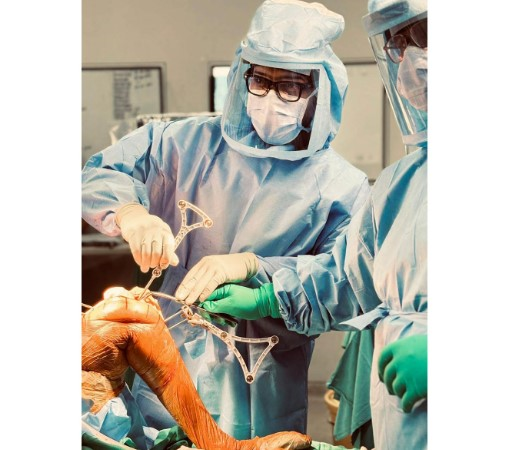New Delhi [India], October 28: Robotic knee replacement surgery is widely considered the future–and increasingly, the present–of orthopaedics.
The technology represents a significant leap from traditional manual techniques, fundamentally transforming the key aspects of a Total Knee Arthroplasty (TKA).
Dr Dibya Singha breakdown why it is viewed as the definitive future of the procedure:
1. Unprecedented Precision and Personalization
- Millimeter Accuracy: The core advantage is the ability to execute the pre-operative plan with extreme precision. Robotic systems restrict the surgeon’s tools (like a saw blade or burr) to a defined area, ensuring bone cuts are performed to the sub-millimeter level, which is difficult to achieve manually.
- Customized Planning: Before the procedure, a CT scan or X-ray data creates a detailed 3D virtual model of the patient’s unique knee anatomy. The surgeon uses this model to plan the optimal implant size, position, and alignment–a plan the robot helps enforce during surgery. This personalization leads to a better-fitting, more “natural feeling” knee.
2. Improved Patient Outcomes
- Better Alignment: Optimal alignment is crucial for the longevity of the implant. Studies increasingly show that robotic assistance achieves more accurate and consistent alignment, which is expected to reduce wear and tear and extend the life of the replacement.
- Less Tissue Trauma: By providing visual and haptic (force-feedback) guidance, the robot helps the surgeon minimize injury to the surrounding ligaments, tendons, and soft tissues. This can lead to:
- Less blood loss.
- Reduced post-operative pain.
- Faster initial recovery and mobilization.
3. Integration with Advanced Technology
The future of robotic surgery isn’t just the arm itself; it’s the convergence with other technologies:
- Artificial Intelligence (AI): Dr. Dibya Singha added AI is being integrated to analyze massive amounts of patient data, allowing the system to suggest the ideal, patient-specific implant position and balance before the surgeon even makes the first cut, further optimizing the plan.
- Augmented Reality (AR): Newer systems are exploring AR and optical tracking, which could make the systems smaller, more agile, and potentially eliminate the need for pre-operative CT scans in some cases, streamlining the process.
- Smart Implants: The development of “smart implants” that can wirelessly transmit data on the knee’s movement and function post-surgery will allow surgeons to get real-time, objective feedback on how well the robotic-assisted procedure is performing over the patient’s lifetime.
In essence, robotic assistance is transitioning from an advanced option to the standard of care because it elevates the surgeon’s capability, minimizes human error, and delivers a highly customized solution for one of the most common and complex orthopaedic procedures.
More about Dr Dibya- please find www.drdibya.com

